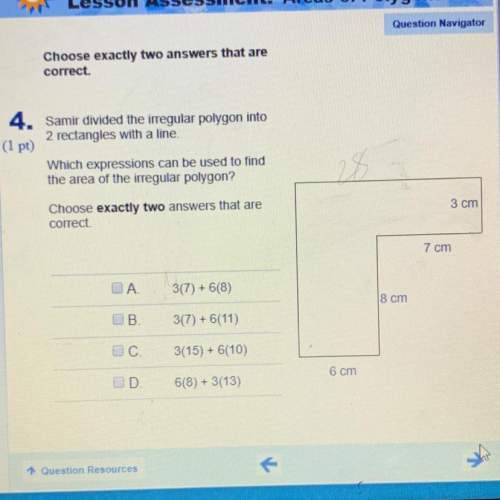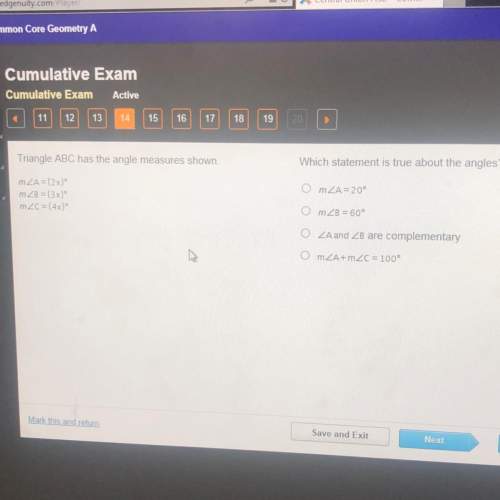Identify the converse of the statement "A → B: If x = 3, then x + 8 = 11."
A)
∼A → ∼B:...

Mathematics, 10.12.2020 19:10 YouKnowGucci
Identify the converse of the statement "A → B: If x = 3, then x + 8 = 11."
A)
∼A → ∼B: If x ≠ 3, then x + 8 ≠ 11.
B)
B → A: If x + 8 = 11, then x = 3.
C)
A ↔ B: x = 3 if and only if x + 8 = 11.
D)
∼A → B: If x ≠ 3, then x + 8 = 11.

Answers: 1


Another question on Mathematics

Mathematics, 21.06.2019 17:00
The variable in a relation who’s value depends on the value of the independent variable is called what?
Answers: 1

Mathematics, 21.06.2019 18:50
Astudent draws two parabolas on graph paper. both parabolas cross the x-axis at (-4, 0) and (6,0). the y-intercept of thefirst parabola is (0, –12). the y-intercept of the second parabola is (0-24). what is the positive difference between the avalues for the two functions that describe the parabolas? write your answer as a decimal rounded to the nearest tenth.
Answers: 2

Mathematics, 21.06.2019 23:50
Apolynomial has two terms. check all of the factoring methods that should be considered. common factor difference of cubes sum of cubes difference of squares perfect-square trinomial factoring by grouping
Answers: 3

Mathematics, 22.06.2019 00:40
The length of the line segment ac is 8x-9 what is the value of x
Answers: 2
You know the right answer?
Questions

Mathematics, 12.10.2020 05:01

Biology, 12.10.2020 05:01

History, 12.10.2020 05:01

Mathematics, 12.10.2020 05:01

Mathematics, 12.10.2020 05:01


Geography, 12.10.2020 05:01

English, 12.10.2020 05:01


Spanish, 12.10.2020 05:01

Mathematics, 12.10.2020 05:01

Mathematics, 12.10.2020 05:01



Spanish, 12.10.2020 05:01



Mathematics, 12.10.2020 05:01

Biology, 12.10.2020 05:01

Geography, 12.10.2020 05:01





